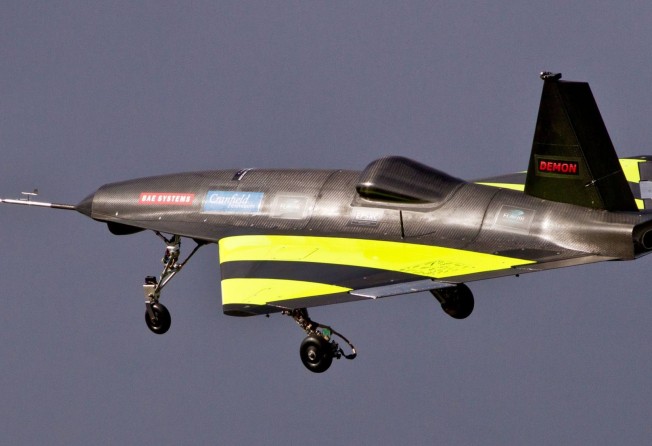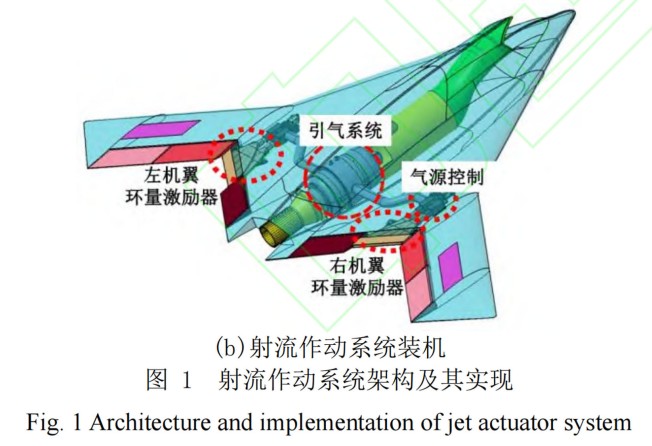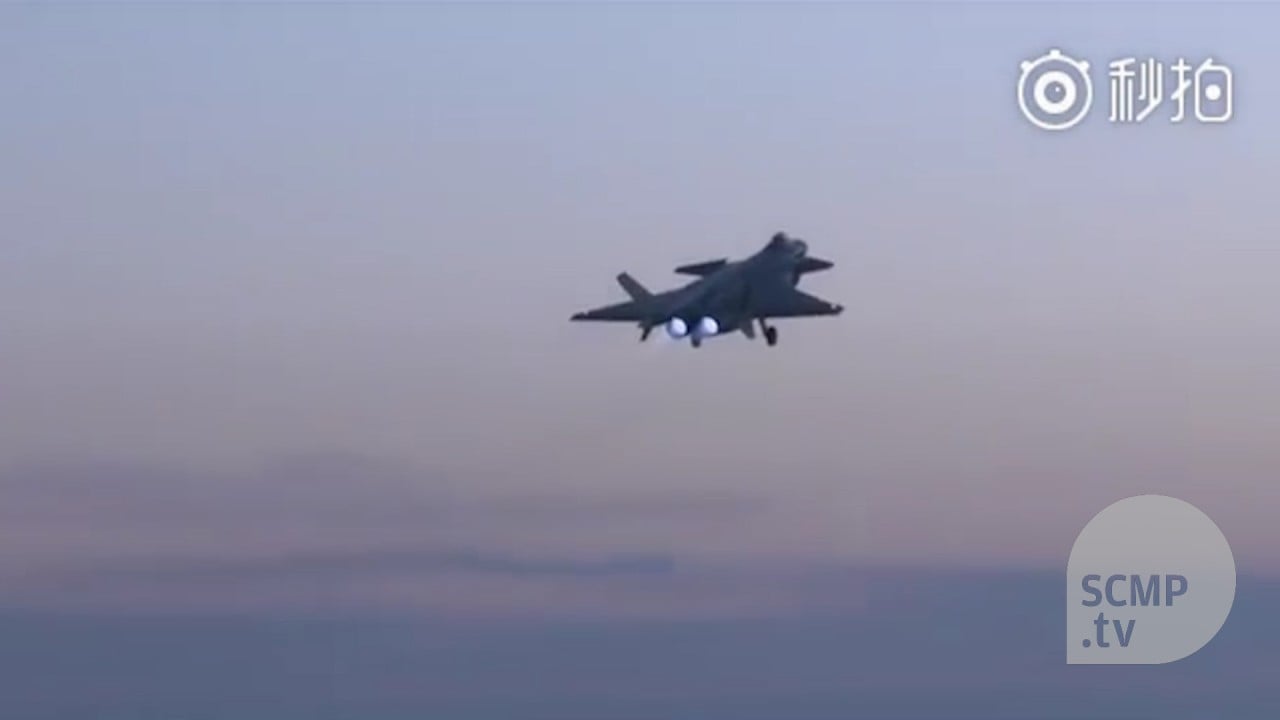Superior stealth: Chinese drone wing design aims to raise the bar for radar-evading aircraft
- Technology harnesses compressed jet engine air and could replace mechanical flight components, researchers say
- Reduced radar signatures would benefit China’s long-range stealth bomber programme

In the sky over southwest China, a team of researchers has been testing a new wing design that they said could help unmanned aircraft better evade radar.
The drone, which has no tail, appears to be a scaled-down version of the United States Air Force’s B2 Spirit bomber, and can fly without the use of elevators, ailerons or flaps – the hinged moving parts known as elevons that help control flight direction – according to the researchers.
“Our work is a first,” the team from the China Aerodynamics Research and Development Centre in Sichuan province said in a paper published on January 19 in the peer-reviewed journal Acta Aeronautica et Astronautica Sinica.
During a test flight, the drone climbed, rolled and adjusted to turbulence imbalances entirely by harnessing the compressed air inside the jet engine, while the aircraft’s elevons were locked in place, the scientists said in the paper.
The high-speed air flow, which was collected and distributed by a device called an actuator, formed a powerful but carefully calibrated layer of air around the drone’s wings that allowed the aircraft to pitch or bank just as effectively as planes that use mechanical parts to manoeuvre, according to the researchers.
“The shape of a stealth aircraft has been carefully designed for aerodynamics and low observation,” said Zhang Liu, who led the research team at the same centre that was involved in the development of China’s workhorse J-20 stealth fighter and hypersonic weapons.
But according to the researchers, mechanical rudders can disrupt the surface areas of the otherwise elaborately designed aircraft, significantly increasing the amount of radar reflecting area, therefore increasing the aircraft’s radar signature.
The mechanical parts also cause segmentation of the wing by producing gaps, sharp edges and bumps. These uneven elements on the wing’s surface bring “additional drag and radar reflection area”, they said.
Guiding an aircraft by using its own compressed jet engine air is not a new idea.
In the 1970s, the US military launched a research project to increase the lift of low-speed bombers by introducing quickly circulating air to the wings.

DEMON, an experimental plane developed by British defence contractor BAE Systems, also performed jet-assisted roll manoeuvres in 2010.
But there has been no aircraft capable of performing pitching and rolling at the same time, according to Zhang’s team.
The main challenge had been thrust, they said.
Changing the course of an aircraft can require a great deal of power, especially during an ascent, but drawing too much fresh air from the engine can lead to a quick loss of thrust.
To solve this dilemma, Zhang’s team diverted excess air from the engine’s compressor turbine, an unprecedented design that achieved the complete “decoupling” of gas collection and thrust generation.
Without disclosing details, the Chinese team said they had found a way to efficiently cool down large volumes of the hot air jet flow.
According to the paper, an actuator placed under the wing that controlled the air streams shooting out from different directions generated enough torque to steer the craft.

During a test flight, researchers said their drone was able to carry out smooth and quick manoeuvres, with response times that were less than 0.02 seconds from order to action, well within the tolerance of the flight control computer, suggesting the new technology’s potential to replace mechanical components in flight, according to the researchers.
The quick response was made possible by using cutting-edge sensors and other domestically developed technologies, according to the researchers.
In 1988, the debut of the B-2 bomber stunned the world with an all-wing, tail-free design that significantly reduced its radar signature and enabled the bomber to infiltrate more deeply behind the enemy lines.
But the US$2 billion aircraft earned a reputation for relatively poor aerodynamics, especially at lower speeds, which led to several crashes near runways.
In December, the US military unveiled a new-generation stealth bomber – the B-21 – but improvements on the wing designs remain classified.
China is also developing a long-range stealth bomber and new technologies to improve the flight performance of such aircraft, according to state media reports.
Zhang’s team said their new technology could find applications on existing or future jet planes and boost flight performance for a relatively low cost thanks to the simple design of the actuator.
While the researchers revealed few technical details in the paper about the structure of their actuator, they said their design eliminated most of the complex components, such as an extra compressor, an electric generator and high-pressure gas storage tanks and vaults, that have been part of earlier designs by other countries.
The researchers did not provide data on the stealth and flight performance improvements.
A wind tunnel experiment conducted last year by a research team from AVIC Aerodynamics Research Institute in Harbin, suggested that a stealth bomber could significantly increase its climbing ability by creating a shower of electrically charged particles over the wings.
According to one estimate by British researchers, an aircraft the size of a Boeing 737 could theoretically more than double its lift coefficient and shorten the required length of runway by up to 75 per cent, by using its jet exhaust to manoeuvre the aeroplane.
